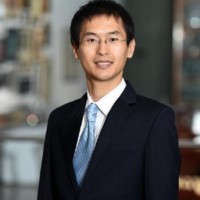NIOSH Announces Results from Competition for Artificial Intelligence Programmers
February 26, 2020
NIOSH Update:
MEDIA CONTACT: Nura Sadeghpour, uvg2@cdc.gov, 202.245.0673
NIOSH Announces Results from Competition for Artificial Intelligence Programmers

Artificial intelligence (AI) is not just a thing of the future. Results from the National Institute for Occupational Safety and Health (NIOSH) crowdsourcing competition for AI programmers are in, exploring ways to automatically read injury records and classify them in occupational safety and health surveillance systems. The 1st place winner, Raymond van Venetië, is a doctoral student in Numerical Mathematics at the University of Amsterdam whose submission improves NIOSH’s ability to classify worker injuries from the NIOSH baseline of 82% accuracy to nearly 90% accuracy.
Currently, whenever an employee is injured at work, humans write explanations of how the injury occurred, read all narratives and assign codes to classify injuries. This takes time, has costs associated with it, and risks the potential for human error. A NIOSH team of researchers, nicknamed “BrainGineers,” decided to crowdsource an AI solution, and through an interagency agreement with the National Aeronautics and Space Administration (NASA)’s Tournament Lab, worked with vendor Topcoder to host the online competition. Programmers competed to develop an algorithm that would best employ the use of AI in reading and classifying injury records.
While not unique to AI, crowdsourcing involves asking the crowd – or people in the public – with a variety of skill sets to provide their unique solution to a problem. The AI competition resulted in 961 submissions from 388 unique persons representing over 26 countries, including Poland, Kenya, Macedonia, Romania, Bangladesh, Russia, and China. The United States and India provided the majority submissions, at 32% and 21%, respectively.

The international reach of this competition showcased highly-skilled individuals who are interested in helping advance and improve the field of public health. For instance, the 4th place winner, Dr. Zhensheng Wang, is a senior biostatistician at Emory University School of Medicine in Atlanta, GA. At his job, he uses machine learning to predict hospital readmission after kidney transplantation but invested his personal time to compete in this contest because the classification task was related to public health.
Those participating self-identified as having degrees in computer science and engineering, chemistry, computer engineering, computer science, data science, and economics to name a few. Second place was awarded to a senior data scientist at Sherbank AI lab in Russia; 3rd place was awarded to a developer and data scientist from China; as noted, 4th place was awarded to a biostatistician at the School of Medicine at Emory University in Atlanta, GA; and 5th place was awarded to a full stack engineer from Bangalore India.

As a result of this competition, NIOSH will be working with the 1st place solution to make an easy-to-use web tool for occupational safety and health professionals who have an interest in the classification of injury narratives.
This was the first-ever external crowdsourcing competition from NIOSH and its parent organization, the Centers for Disease Control and Prevention (CDC), and it produced 21% more registrants and 66% more submissions than the average Topcoder competition. The top 5 winning solutions are available on GitHub.
NIOSH is the federal institute that conducts research and makes recommendations for preventing work-related injuries, illnesses and deaths. For more information about NIOSH visit www.cdc.gov/niosh.
